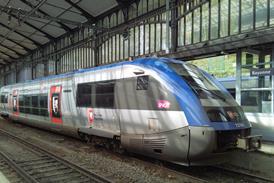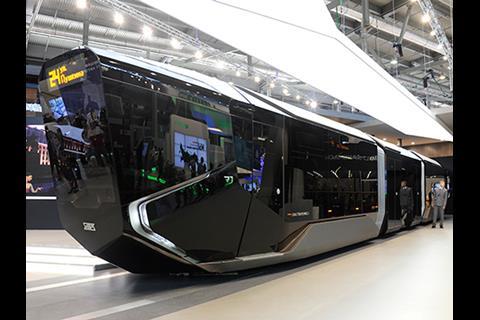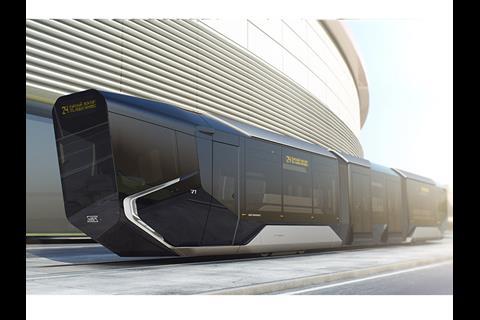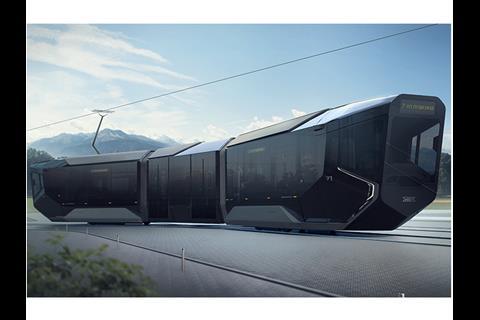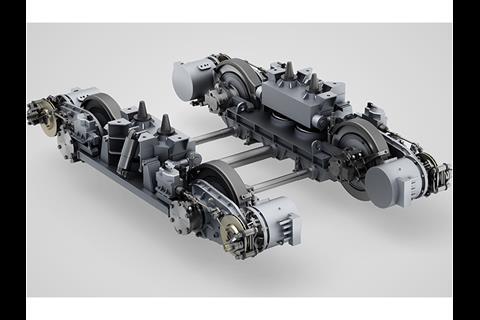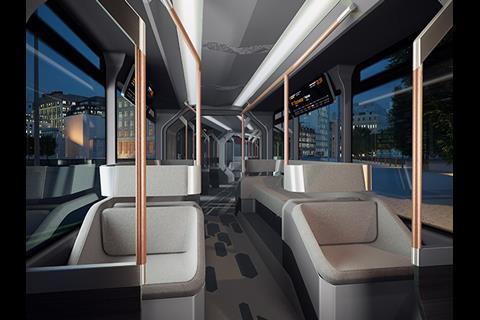RUSSIA: An unusually-styled prototype tram was unveiled at the Innoprom 2014 industrial exhibition in Yekaterinburg on July 9. Branded Russia One or R1, it has been developed by the Uraltransmash tram manufacturing subsidiary of defence and rolling stock supplier Uralvagonzavod, in partnership with design agency OKB Atom.
According to the designers, R1 combines ‘the up-to-date achievements of the Russian transport industry with hype-generating visual solutions’. It aims to change attitudes towards public transport by providing a ‘business class’ environment described as an ‘iPhone on rails’, and to highlight Russia’s transport engineering capabilities.
The three-section prototype is 24 m long and 2 500 mm wide. There are four doors per side, with the door mechanisms and gangways being amongst the few imported components of the tram. The two bogies are designed to cope with poor track conditions and curves down to 16 m radius.
Composite materials provide a lightweight and modular body, with the ability to design and fit a unique design of cab for each city. The cab gives the driver a 180° view, and the 12° reverse angle of the front is intended to offer good visibility, reduced glare and lower solar gain. LED lighting is fitted inside and out, with the interior lighting adjusting to suit the time of day, and there are internal and external CCTV cameras.
The capacity of the tram is 150 to 190 passengers at a density of 5 m/2, including 28 seated, although various configurations are proposed including an economy version for smaller towns.
The air-conditioned interior features Glonass and GPS-based passenger information, wi-fi, and antibacterial handrails. Regenerated braking energy could be used to heat the entrance areas to prevent icing, and battery power could be used for catenary-free operation.
The black livery is inspired by semi-precious stones from the Urals, with a mirror effect to reflected the surroundings and become an ‘integral and harmonious part’ of the cityscape.
The tram on show is a conceptual prototype, but the designers say it would not require much modification to go into production. It is hoped to build production trams for Yekaterinburg and Omsk from 2017, with the manufacturer to offer a leasing package to encourage orders.


